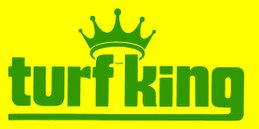April is National Lawn Care Month
In recognition of spring, the Professional Lawn Care Association of America (PLCAA) has designated April as National Lawn Care Month.
As spring arrives, 30 million acres of turf across the nation is turning green and growing. PLANET (Professional Landcare Network) observes the importance of lawns and their aesthetic and environmental benefits during National Lawn Care Month each April. Please share these facts …
• Well cared for lawns can significantly increase property values.
• A healthy lawn is of utmost importance to our environment. A 50–foot by 50–foot lawn produces enough oxygen for a family of four.
• Lawns cool the atmosphere. Eight healthy front lawns have the cooling effect of 70 tons of air conditioning, which is enough for 16 average homes.
• Grass converts carbon dioxide to oxygen, a process that helps clear the air.
• Dense, healthy grass slows water runoff, removing contaminants and trap-ping soil. Fresh, filtered water returns to the underground water supply.
Be proactive in April and use a lawn care program that will ensure both a healthy and beautiful lawn throughout the year.• A healthy lawn is of utmost importance to our environment. A 50–foot by 50–foot lawn produces enough oxygen for a family of four.
• Lawns cool the atmosphere. Eight healthy front lawns have the cooling effect of 70 tons of air conditioning, which is enough for 16 average homes.
• Grass converts carbon dioxide to oxygen, a process that helps clear the air.
• Dense, healthy grass slows water runoff, removing contaminants and trap-ping soil. Fresh, filtered water returns to the underground water supply.
http://www.landcarenetwork.org/cms/home.html
The Benefits of a Well–Maintained Lawn and Landscape.
A well–maintained lawn and landscape can be environmentally–friendly and provide substantial ecological and community benefits in the following ways. ▬- A well–maintained lawn and landscape can act as a valuable green space in the urban environment.
- A well–maintained lawn and landscape can act as a cleanser of dust and other air of pollutants.
- A well–maintained lawn and landscape can act as a contributor in solving so–called climate change.
- A well–maintained lawn and landscape can act as a cushion that minimizes injuries if someone falls.
- A well–maintained lawn and landscape can act as a filter for pollutants originating from rain water.
- A well–maintained lawn and landscape can act as a habitat for thousands of species of birds and other wildlife.
- A well–maintained lawn and landscape can act as a heat–dissipater for cooling the atmosphere, just like an air conditioner.
- A well–maintained lawn and landscape can act as an offsetter of carbon emissions.
- A well–maintained lawn and landscape can act as a preventer of soil and water run–off.
- A well–maintained lawn and landscape can act as a recharger of moisture in the atmosphere.
- A well–maintained lawn and landscape can act as a recreational site for children and adults alike.
- A well–maintained lawn and landscape can act as a reducer of noise and sun glare.
- A well–maintained lawn and landscape can act as a regulator of carbon dioxide and greenhouse gases.
- A well–maintained lawn and landscape can act as a stabilizer for preventing soil erosion and flooding.
- A well–maintained lawn and landscape can be used to reclaim and restore environmentally–damaged sites, such as landfills.
- A well–maintained lawn and landscape can significantly contribute to property value improvement.
If you
have a lawn/tree/shrub that needs some Tender Loving Care- get The KING OF
GREEN:
or call
us at 905.318.6677 or 1.888.TURFKING (887.3546)
If you
would like more information, please Contact us
Follow
us on Twitter http://twitter.com/turfkingofgreen
Join our
Facebook page
Copyright 2009
Turf King-Hamilton. All Rights Reserved.



